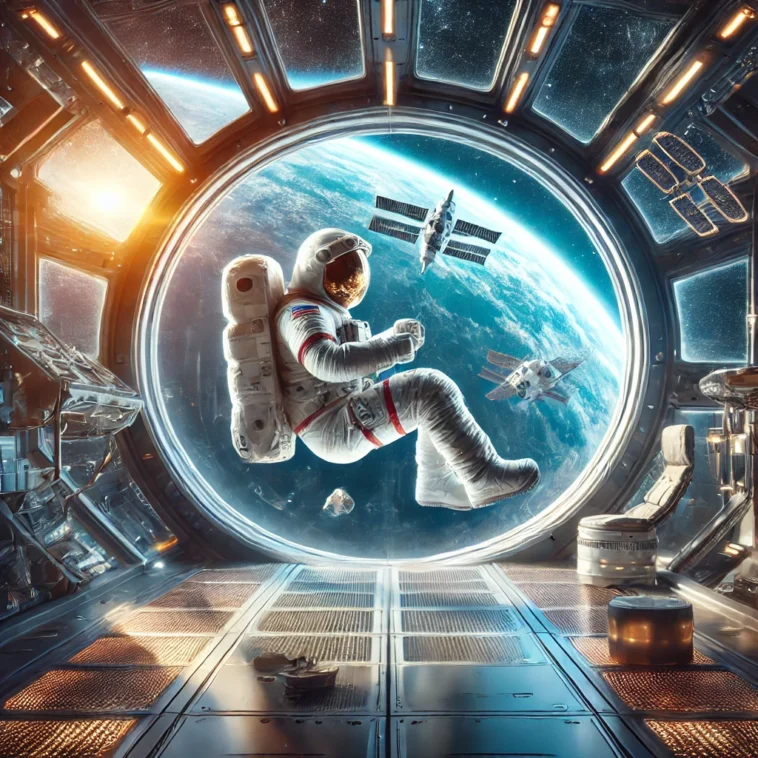 Life in Space | How Astronauts Eat, Drink, and Use the Bathroom in Zero Gravity
Life in Space | How Astronauts Eat, Drink, and Use the Bathroom in Zero Gravity
Exploring space isn’t just about breathtaking views of Earth or scientific experiments — astronauts live and work in space for months, facing unique challenges every day.
Life in space isn’t just about floating around and gazing at Earth. From eating meals to handling basic hygiene, astronauts face unique challenges daily. Let’s explore how they manage to eat, drink, and stay clean while defying gravity!
 The Challenges of Life in Space
The Challenges of Life in Space
Living in microgravity isn’t as simple as floating around. With no “up” or “down,” astronauts must adapt to basic tasks we take for granted on Earth. Let’s break it down!
 How Do Astronauts Eat in Space?
How Do Astronauts Eat in Space?
First, let’s talk about food. In microgravity, everything floats — including your dinner. To stop meals from drifting away, astronauts rely on specially packaged foods. These meals come dehydrated, frozen, or thermostabilized (heat-treated to last longer).
Instead of traditional plates and forks, they use pouches and spoons with Velcro. This keeps food from floating off. For example, soups are sipped from straws attached to sealed bags. Meanwhile, tortillas replace bread because they create fewer crumbs — nobody wants breadcrumbs floating into sensitive equipment!
 How Do Astronauts Drink in Space?
How Do Astronauts Drink in Space?
In zero gravity, liquids form floating blobs. So how do astronauts stay hydrated?
-
Special pouches: Drinks come in bags with straws that have a one-way valve — no leaks allowed!
-
Recycled water: The ISS (International Space Station) recycles sweat, breath moisture, and even urine into clean, drinkable water. (Yes, really!)
-
Coffee, too! Astronauts use specially designed cups that pull liquid towards their lips using surface tension.

 The Big Question: How Do Astronauts Use the Bathroom?
The Big Question: How Do Astronauts Use the Bathroom?
Space bathrooms are an engineering marvel. Let’s get into the details:
 The Toilet Setup
The Toilet Setup
-
Vacuum suction: Instead of gravity, space toilets use air flow to suck waste away.
-
Solid waste: Collected in a bag and stored until disposal (often burns up on re-entry).
-
Liquid waste: Urine gets recycled into water — nothing goes to waste!
 Personal Hygiene in Space
Personal Hygiene in Space
-
No showers: Astronauts use rinseless wipes and no-rinse shampoo.
-
Tooth brushing: Spit is swallowed or wiped off — no sink needed.
-
Clothes: Fresh clothes are limited — they wear items for days before changing.

 How Do Astronauts Sleep in Space?
How Do Astronauts Sleep in Space?
Floating around sounds fun, but sleep is crucial. Here’s how they manage:
-
Sleeping bags are strapped to walls or ceilings — no beds needed.
-
Velcro or restraints prevent them from drifting.
-
8 hours of sleep is the goal, though many report shorter rest due to noise, light, or excitement!

 Daily Routines: Work and Play in Space
Daily Routines: Work and Play in Space
Astronauts aren’t just surviving — they’re busy!
-
6-day workweeks: Time is split between science experiments, maintenance, and exercise.
-
2 hours of daily exercise prevents muscle and bone loss — treadmill, stationary bike, and weightlifting (with resistance bands).
-
Free time: Watching Earth from the Cupola, chatting with loved ones, or even watching movies.

 The Psychological Side of Space Life
The Psychological Side of Space Life
Isolation, distance from loved ones, and confined spaces take a toll. NASA ensures astronauts get:
-
Weekly video calls with family.
-
Counseling support to manage stress.
-
Planned leisure activities to keep morale high.

 Life in Space — A Balance of Survival and Adventure
Life in Space — A Balance of Survival and Adventure
Astronauts are modern-day pioneers, adapting to a world without gravity. From eating freeze-dried spaghetti to brushing teeth without water, life in space requires creativity, resilience, and a sense of humor.
Next time you enjoy a meal or brush your teeth, imagine doing it floating 400 kilometers above Earth — it’s harder than it looks!
Share this:
- Click to share on Facebook (Opens in new window) Facebook
- Click to share on X (Opens in new window) X
- Click to share on LinkedIn (Opens in new window) LinkedIn
- Click to share on Reddit (Opens in new window) Reddit
- Click to share on Tumblr (Opens in new window) Tumblr
- Click to share on Pocket (Opens in new window) Pocket
- Click to share on WhatsApp (Opens in new window) WhatsApp


